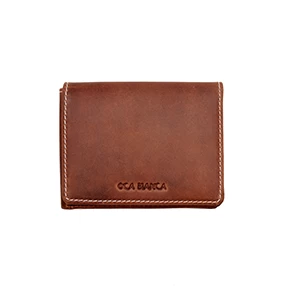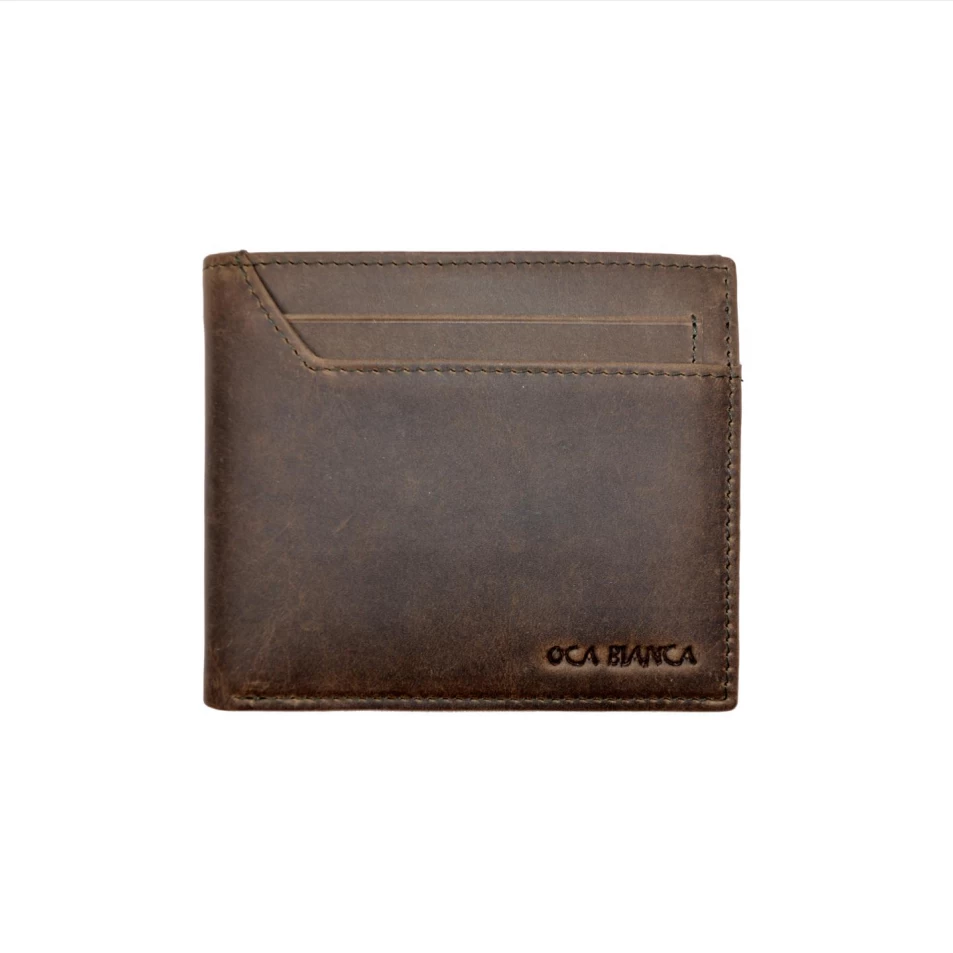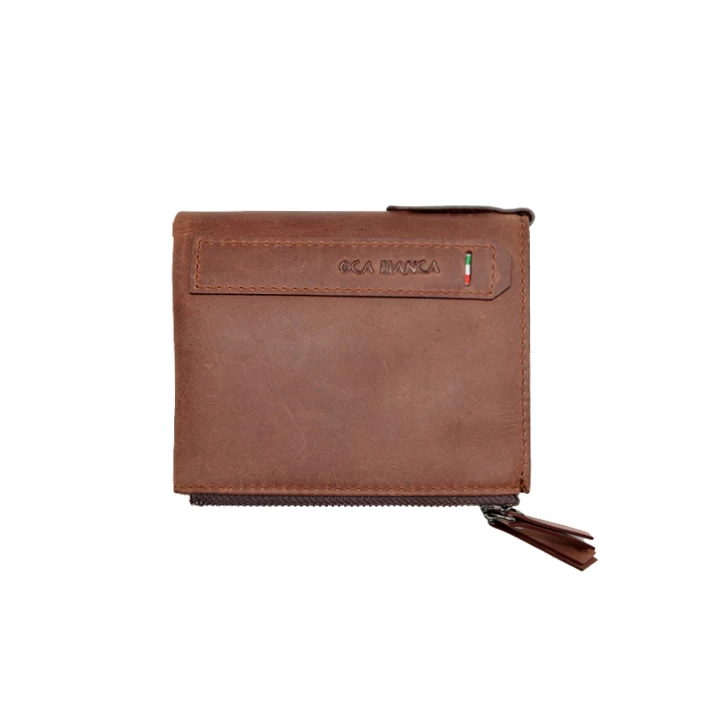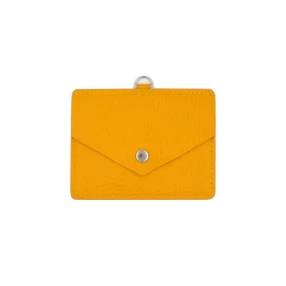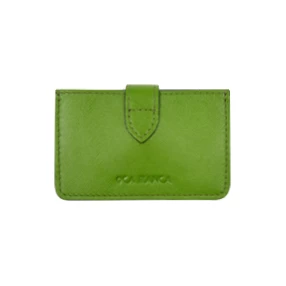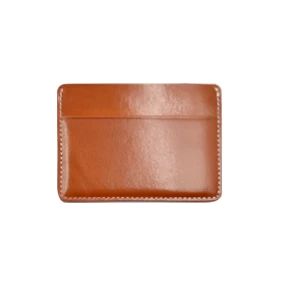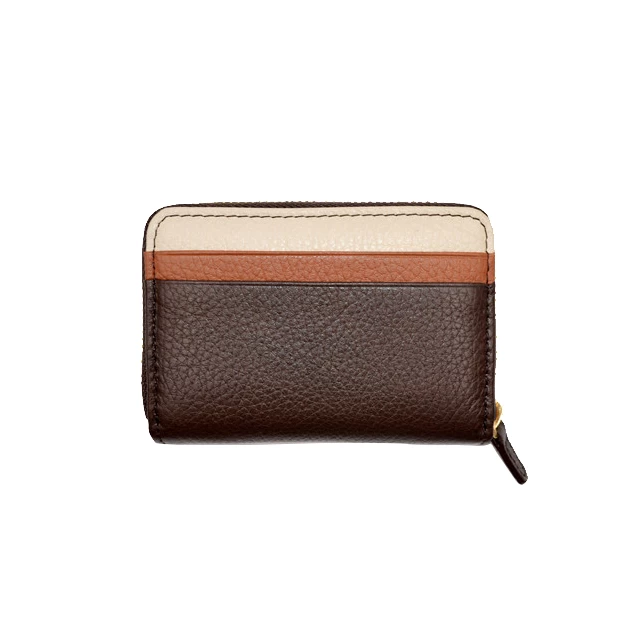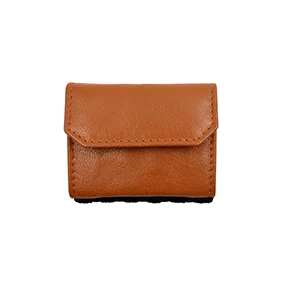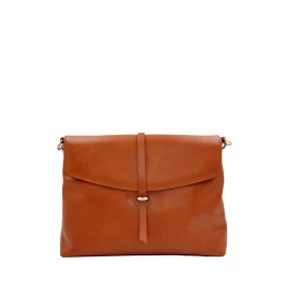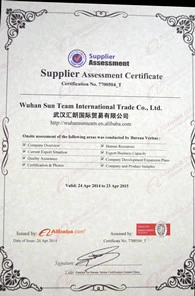Leather Production process
Lily
www.walletwmazon.com
2017-06-14 10:18:14
The leather manufacturing process is divided into three fundamental subprocesses: preparatory stages, tanning, and crusting. All true leathers undergo these subprocesses. A further subprocess, surface coating, can be added into the leather process sequence, but not all leathers receive surface treatment. Since many types of leather exist, it is difficult to create a list of operations that all leathers must undergo.
The preparatory stages are when the hide/skin is prepared for tanning. Preparatory stages may include: preservation, soaking, liming, unhairing, fleshing, splitting, reliming, deliming, bating, degreasing, frizing, bleaching, pickling, and depickling.
Tanning is a process that stabilizes the protein of the raw hide or skin so it does not putrefy, making it suitable for a wide variety of end applications. The principal difference between raw and tanned hides is that raw hides dry out to form a hard, inflexible material that, when rewetted (or wetted-back) putrefy, while tanned material dries to a flexible form that does not become putrid when wetted-back.
Many tanning methods and materials exist. The choice ultimately depends on the end application for the leather. The most common tanning material is chromium, which leaves the tanned leather a pale blue color (due to the chromium). This product is commonly called wet blue. The hides, when finished pickling, are typically between pH 2.8 and 3.2.[citation needed] At this point, tannery workers load the hides into a drum and immerse them in a float that contains the tanning liquor. The hides soak while the drum slowly rotates about its axis, and the tanning liquor slowly penetrates through the full thickness of the hide. Workers periodically cut a cross-section of a hide and observe the degree of penetration. Once the process achieves even penetration, workers slowly raise the float's pH in a process called basification, which fixes the tanning material to the leather—and the more tanning material fixed, the higher the leather's hydrothermal stability and shrinkage temperature resistance. Chrome-tanned leather pH is typically between pH 3.8 and 4.2.
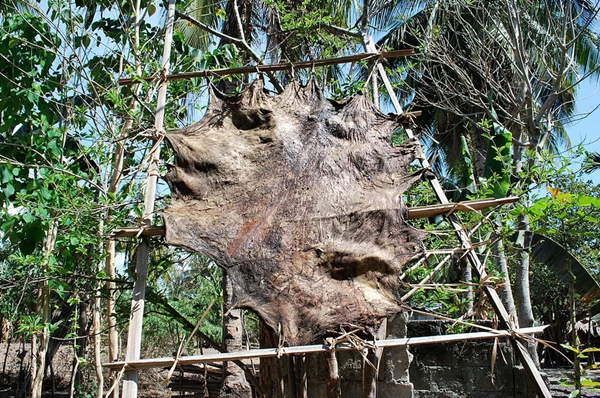
The preparatory stages are when the hide/skin is prepared for tanning. Preparatory stages may include: preservation, soaking, liming, unhairing, fleshing, splitting, reliming, deliming, bating, degreasing, frizing, bleaching, pickling, and depickling.
Tanning is a process that stabilizes the protein of the raw hide or skin so it does not putrefy, making it suitable for a wide variety of end applications. The principal difference between raw and tanned hides is that raw hides dry out to form a hard, inflexible material that, when rewetted (or wetted-back) putrefy, while tanned material dries to a flexible form that does not become putrid when wetted-back.
Many tanning methods and materials exist. The choice ultimately depends on the end application for the leather. The most common tanning material is chromium, which leaves the tanned leather a pale blue color (due to the chromium). This product is commonly called wet blue. The hides, when finished pickling, are typically between pH 2.8 and 3.2.[citation needed] At this point, tannery workers load the hides into a drum and immerse them in a float that contains the tanning liquor. The hides soak while the drum slowly rotates about its axis, and the tanning liquor slowly penetrates through the full thickness of the hide. Workers periodically cut a cross-section of a hide and observe the degree of penetration. Once the process achieves even penetration, workers slowly raise the float's pH in a process called basification, which fixes the tanning material to the leather—and the more tanning material fixed, the higher the leather's hydrothermal stability and shrinkage temperature resistance. Chrome-tanned leather pH is typically between pH 3.8 and 4.2.
Tel:86 2785570058
Email:sunteam05@wuhansunteam.com
Website:www.leathergoods-manufacturers.com
Email:sunteam05@wuhansunteam.com
Website:www.leathergoods-manufacturers.com








